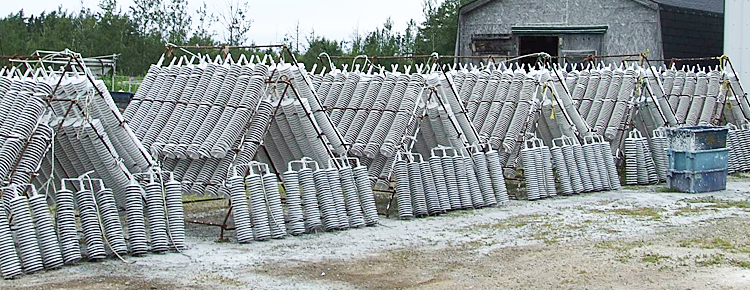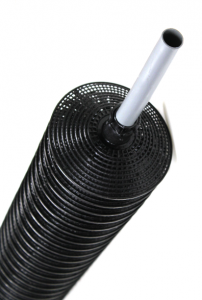
Seed Collectors
Oyster seed collection can occur in a variety of ways.
On-bottom traditional seed collection includes the spreading of cultch, recycled oyster shells, on the sea bed. Over time, spat (oyster seed) settle on the empty oyster shells, maturing to a harvestable size. These oyster beds are most often situated in an intertidal zone to prevent fouling and strengthen the abductor muscles of the oysters.
Oyster sticks are another method of traditional seed collection in the wild as well as in hatcheries. They have been a mainstay in Australian and Japanese oyster farming for centuries. Although still widely used, these methods of tradition collection leave the oysters susceptible to predators in the wild and have made way for more advanced options for oyster seed collection.
More modern methods of seed collection include using oyster (Chinese) hats, coupelles, and modified drain pipes. Long lines and raft culture are other methods of collection. Oyster spat collector trays are used primarily on tidal flats to collect seed in the intertidal zone. The use of these methods is subject to an oyster Aquaculturist’s own personal preference in collection, depending on the conditions in the area. In most all situations, the collector is covered in a thin layer of a cement, lime and sand mixture to assist in setting.
Hatchery Seed
Hatchery spat are grown in laboratory conditions and fed nutrients that can enhance growth. Using hatchery spat allows oyster Farmers to cut down on labour costs while beginning the growing process with healthy, certified seed that are resistant to disease.
Technological advances have been made to develop non-spawning oysters. Invented in 1979 by Standish Allen, triploid oysters have three sets of chromosomes which making them sterile. Triploids do not spawn and continue to grow throughout the year. They can be harvested at any time, including the summer months (depending on local conditions). Most hatcheries are now offering triploid oyster seed, given the benefits.
Upwellers (FLUPSY) and Downweller Systems
To aid in the growth of juvenile oysters before they’re ready to be transferred to grow-out equipment, producers are beginning to adopt the use of an Upweller or FLUPSY (Floating Upweller System). In a FLUPSY, the seed sit in silos and are fed a constant flow of naturally occurring nutrients called phytoplankton from the upwell of water that the structure generates. This promotes rapid growth of the spat.
Along with providing essential nutrients, a FLUPSY can protect oyster seed from predators, competition from other shellfish and biofouling in the early stages of development.
A Downweller System provides hatchery operations with a clean substrate and proper environment; nylon mesh, finely crushed shell (microcultch) or another suitable material. The downward flow of water provides essential nutrients for the setting oysters. Just as an Upweller, the Downweller is designed to aid in the growth of juvenile oysters.
We’re here to help. To receive more information on oyster seed collection or the purchase of hatchery seed, please give us a call or send us a message using the form below (or to the right).

